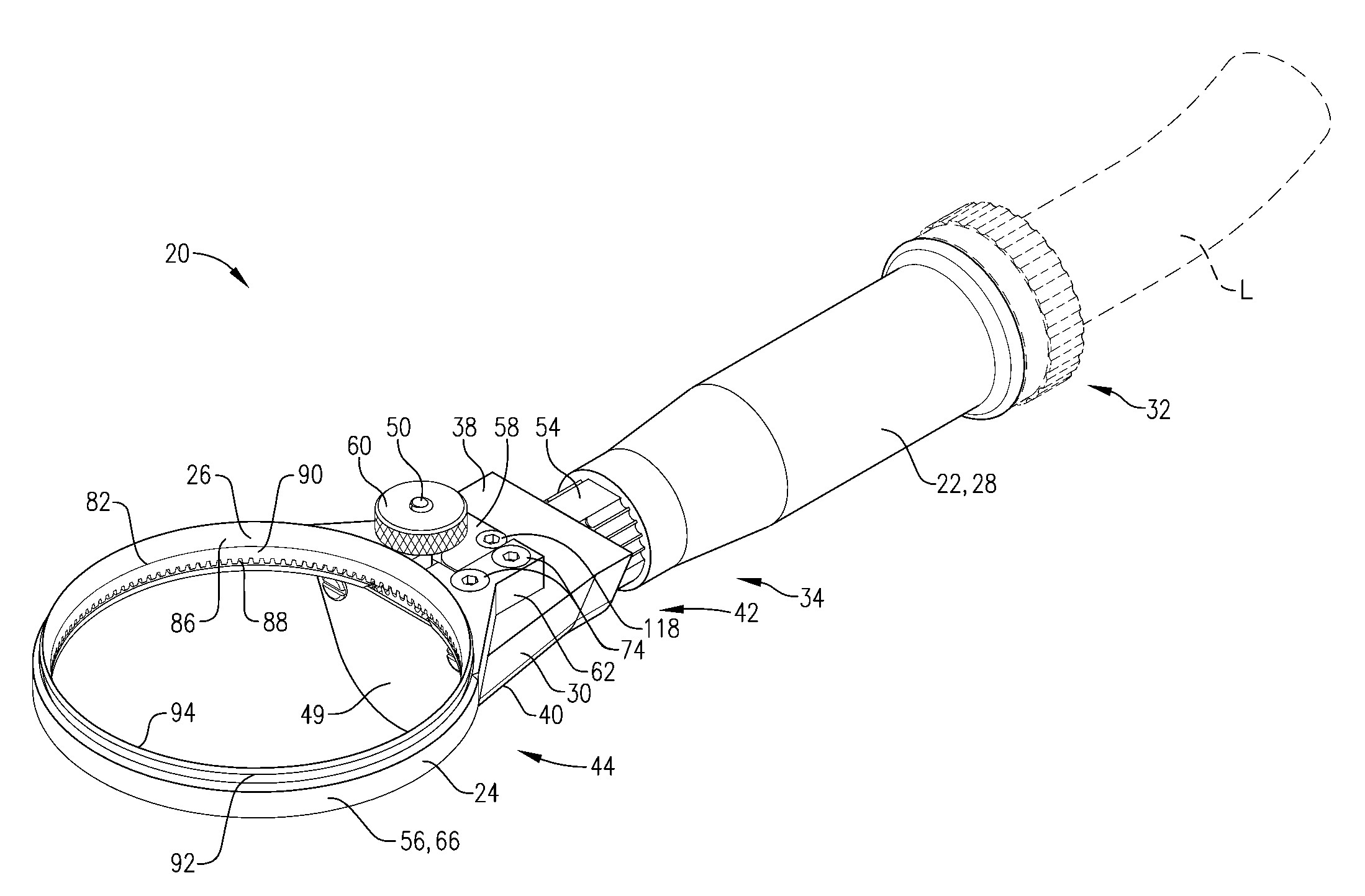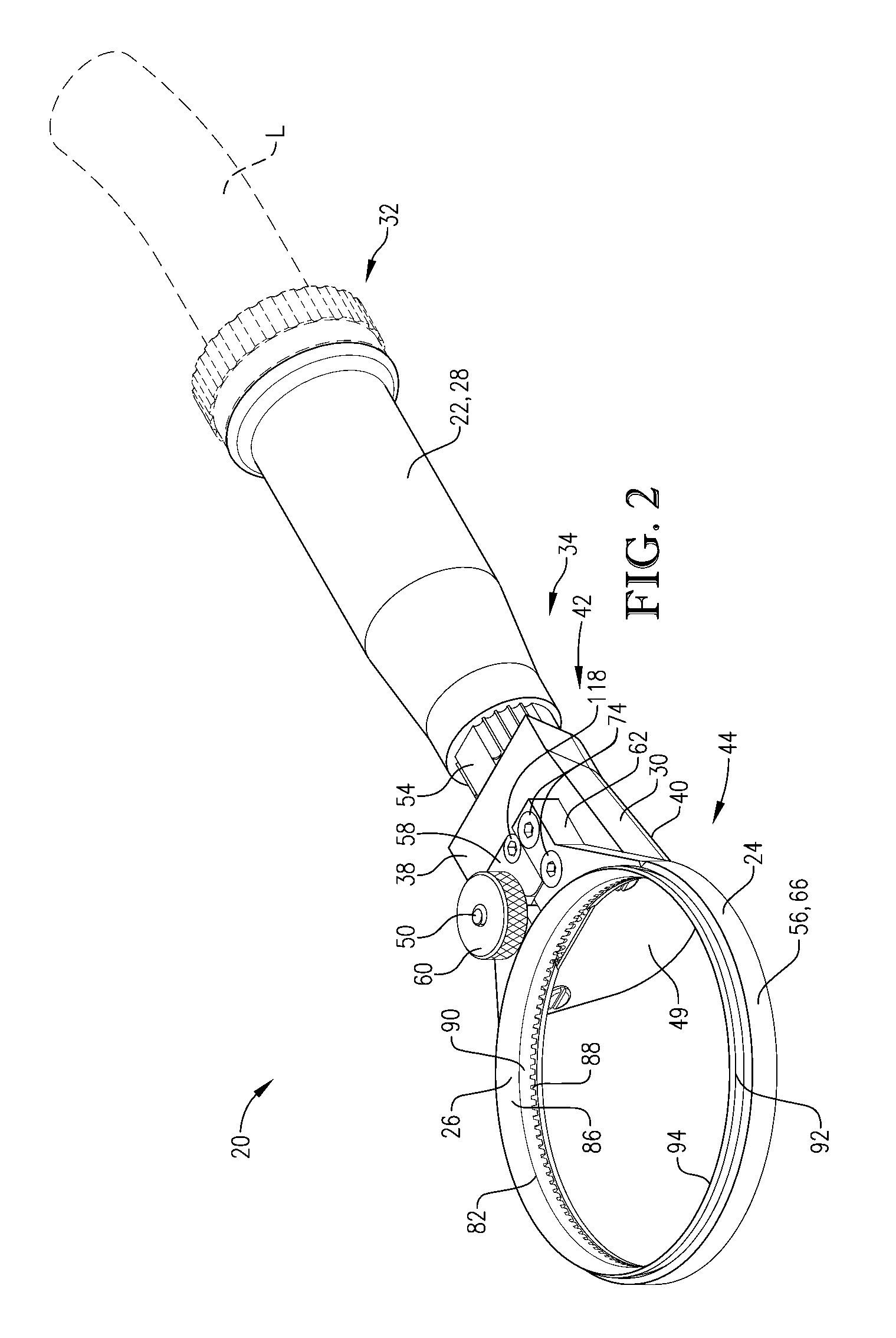Rotary knife with mechanism for controlling blade housing
a technology of rotating blades and rotary knives, which is applied in the direction of rind cutting-off apparatus, poultry processing, fish skinning, etc., can solve the problems of requiring the cutting edge of annular blades is quickly dull and requires frequent sharpening or replacement, and the maintenance of conventional rotary knives is not easy
- Summary
- Abstract
- Description
- Claims
- Application Information
AI Technical Summary
Benefits of technology
Problems solved by technology
Method used
Image
Examples
Embodiment Construction
[0023]Turning initially to FIGS. 1 and 2, a rotary knife 20 is constructed in accordance with a preferred embodiment of the present invention. The illustrated rotary knife 20 is particularly well suited for use in meat processing facilities, although other knife applications are entirely within the ambit of the present invention. The illustrated rotary knife 20 is preferably pneumatically powered by a pressurized air source (not shown), e.g., an air compressor. However, the principles of the present invention are equally applicable where the rotary knife is driven by alternative external power sources, such as sources that transmit power through hydraulic power or electrical power. The rotary knife 20 broadly includes a handle 22, a blade carrier assembly 24, and a rotating blade assembly 26.
[0024]Turning to FIGS. 1 and 2, the handle 22 includes a grip housing 28 and a base 30. The grip housing 28 has a generally cylindrical shape and extends between a proximal connector end 32 for ...
PUM
 Login to View More
Login to View More Abstract
Description
Claims
Application Information
 Login to View More
Login to View More - R&D
- Intellectual Property
- Life Sciences
- Materials
- Tech Scout
- Unparalleled Data Quality
- Higher Quality Content
- 60% Fewer Hallucinations
Browse by: Latest US Patents, China's latest patents, Technical Efficacy Thesaurus, Application Domain, Technology Topic, Popular Technical Reports.
© 2025 PatSnap. All rights reserved.Legal|Privacy policy|Modern Slavery Act Transparency Statement|Sitemap|About US| Contact US: help@patsnap.com



